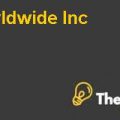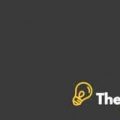Introduction
Color scope, Inc. formed in 1976 by a China Immigrant to USA named Andrew Cha. Colors cope initially serves local agencies of advertising with special effects and its reputation increased in photography with special effects within fey years. With the passage of times its sales and revenues increased significantly.
Enhancement in technology results in the larger number of small and big competitors forced Color scope to cut down its prices. It is expected that this trend of price war will continue and will result in further decrease of prices.
Therefore Cha decided to analyze the market deeply and is expecting to rebuild the processes of its business like its operations and the strategies related to the pricing decisions.
Profitability of different Jobs
Cha is expecting to analyze its products with two stage costing system. There are many number of jobs performed by the Cha. Its revenues and associated costs, cost pools and their drivers are present in the exhibits. With the help of the data it is clear that five cost pools are present in the cost structure of the company.
In order to calculate relevant profit per job it is necessary that the all cost are allocated according to the activities performed by the specific pool. First of all cost pools are identified which are job preparation, scanning, assembly, output and quality control. The second step is to identify the relevant cost drivers which are associated with specific cost pool.
Like Floor space in square feet is the stager driver of the depreciation cost Depreciation cost is allocated to each cost pool on the basis of this cost driver. In two stage costing system firstly costs are allocated to the resources then in second step these cost are allocated to the cost pools according to the suitable stage driver.
In this scenario firstly cost are allocated according to the resources then in second stage these costs are allocated to the cost pools according to the suitable stage driver. Like the other variable overheads are firstly allocated to the resources on the basis of floor space per square feet then in second stage driver these costs are allocated to specific cost pools on the basis of labor hours worked.
In this all overheads are allocated to each cost pool to identify the profit per job. For this purpose revenue and material cost per job is given. With the help of two stage costing system overheads are assigned to each of the five cost pools according to the specific cost driver.
After assigning the overheads to each cost pool total cost of each job is identified by adding the material cost wage cost and other overheads like rent and depreciation. By subtracting the revenue of each job with the total cost profit per job is identified. Profit for each job is different according to the number of activities.
The cost pool with greater number of activities assigned with the greater amount of overhead cost. Greater allocation of overhead cost results in loss of certain jobs like job 605, It incurring revenue of 50,000 but allocation of greater overheads due to the greater number of labor hours results in the loss on this job.
Full Cost method
Full cost method identifies the cost of each component according to the activities performed by that component. With the help of the full cost method appropriate cost related to a specific cost pool is identified, therefore it gives more clearly and insight view of the cost structure of that component and helps in better decision making.
On the other hand direct cost method assigns cost to cost pools on the basis of number of units produced or sale and number of labor hours, it ignore the other basis and activities performed by different cost pools.
Cost estimates produced on such basis didn’t provide the more clear and insight figure of the cost structure of that component and cost pool, Therefore it leads to the wrong decision making when allocating budgets or in decision making processes. Thus full cost method is far better costing method than the direct cost method...................................
This is just a sample partial case solution. Please place the order on the website to order your own originally done case solution











